1 de September de 2022
The Importance of Measuring Your Glutes and Hamstrings Workout
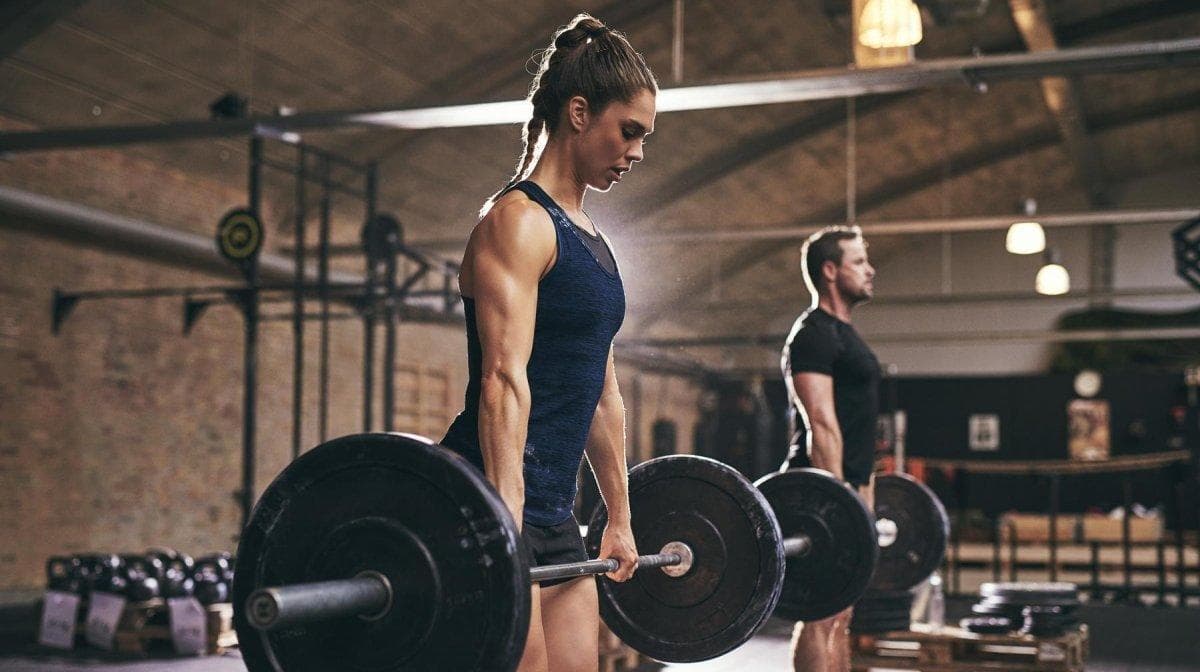
Source: https://www.myprotein.es/thezone/entrenamiento/ejercicios-peso-muerto/
One of the most forgotten muscles in any gym in the world is the muscles of the legs. There are many people who focus on a training of the upper body and leave aside the improvements of the lower body. However, the legs should be the main part of the body in our training since they serve us for everything we do. Human movement since the beginning of time with Neanderthal man has been based on walking and, therefore, having strong legs has allowed us to travel long kilometers, run, jump, hunt … in short, move (1).
However, if we look closely at any gym in the world there is a population that is very focused on improvements of the quadriceps, glutes and hamstrings; women. Many of the routines that women perform focus on “toning” the hips, buttocks and leg areas. I personally like to talk more about gaining muscle mass and reducing fat percentage than “toning”. In the end, the word “tone” means “to tone” the muscle and this is wrong. Muscle tone always exists, and not because it is more or less strong it changes. So today we are going to focus on analyzing gluteal and hamstring workouts that help improve muscle mass.
For this, we must not forget that any training and even more so the training of glutes and hamstrings must be measured. There is a well-known expression in the world of training that says: “What is not measured cannot be improved” and therefore, we say that we must measure our gluteal and hamstring training if possible through the linear encoder of Vitruve to quantify the improvement of our training.
A little anatomy about gluteal and hamstring training
Before starting with any training routine or any exercise we must understand what muscles we are activating and what they are for. In our case, gluteal and hamstring training defines very well the two muscle groups that we are going to work.
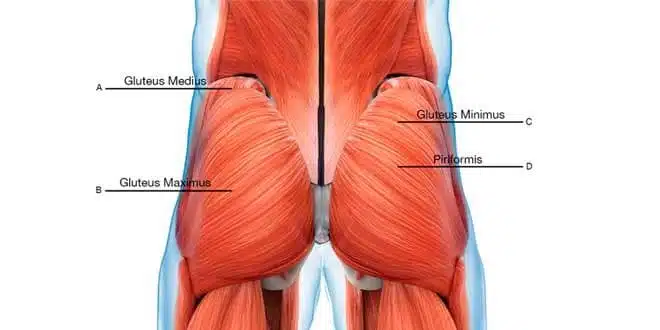
Source: https://mejorconsalud.as.com/fitness/salud/fisioterapia/anatomia-de-los-musculos-de-los-gluteos/
In this image we can see that the region of the buttocks is made up of 3 muscles mainly; the gluteus maximus, gluteus medius and gluteus minorus. We must understand that they all work together but each of them has a function (2, 3). On the other hand, we must bear in mind that the curved shape of the gluteus is provided by the gluteus maximus, therefore, the vast majority of training routines focus on this muscle. A gluteal and hamstring workout usually works the 3 muscles whose functions are:
- Gluteus maximus: It is a hip extender. Extend your leg back.
- Gluteus medius: It is a hip abductor and rotator. It abducts the leg to the outside side and helps rotation.
- Gluteus Minorus: It is also a hip abductor and rotator.
On the other hand, the hamstrings are also made up of several muscles whose main function is knee flexion. Next, we see the differences between the femoral biceps, the semitendinosus and the semimembranous:
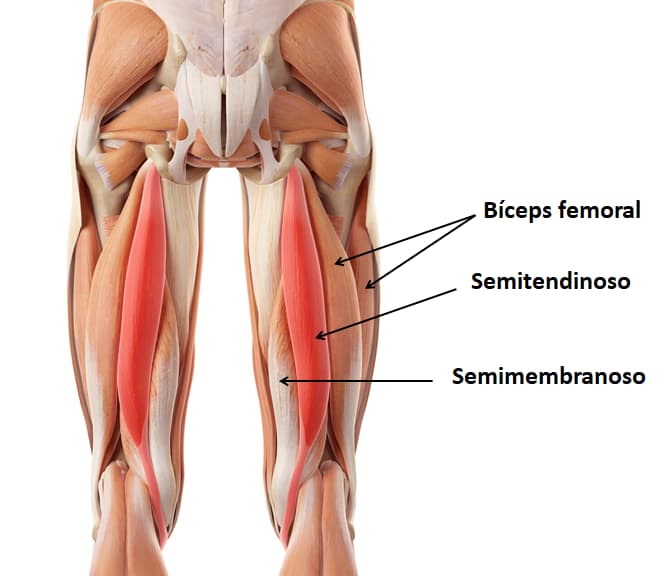
Source: https://www.escuelamahashakti.com/isquiosurales-en-el-yoga/isqui/
As you can see the hamstring muscles are also formed 3 different muscles; the biceps femoris, semitendinosus and semimembranosus whose main functions are hip extension, internal and external rotation of the hip and knee flexion (4).
Knowing then that both muscle groups have similar functions, it is interesting to perform a joint training to enhance their benefits. However, when performing a gluteal and hamstring workout the training load may be too high so quantifying the training loads is a “must” in this case.
Why do a gluteal and hamstring workout together?
A gluteal and hamstring workout can be a very good option as a day within your training routine, but do not forget that you have to train all muscle groups to have a functional body. Remember that movement is the sum of all muscle contractions and we cannot generate decompensation. Do your gluteal and hamstring training, but don’t forget about the other parts of your body.
That said, working together the glutes and hamstrings can be a very good option because they are the two main muscle groups of the back of the legs. We should also give a little prominence to the twin or gastrocnemius to work the entire back chain.
Also, as we’ve seen in the anatomy section, a gluteal and hamstring workout makes sense because they both help each other. Many times we are asked if gluteal training helps the hamstrings and the answer is yes. In a movement such as the deadlift, glutes and hamstrings work together and are especially very useful for braking during the race or for the deceleration phase in a jump, so yes, do not hesitate to train them together (5).
Many times in team sports such as football they focus a lot on the work of the front of the leg (the quadriceps) and leave aside the back. This imbalance can lead to serious injuries so if you have a strong gluteus and hamstring you will reduce your risk of injury (6). In addition, one of the benefits of working them together is that they can help you look a stronger leg and help increase the muscle mass of the buttock. So don’t hesitate to carry out your gluteal and hamstring training together.
How to increase your muscle mass in glutes and hamstrings?
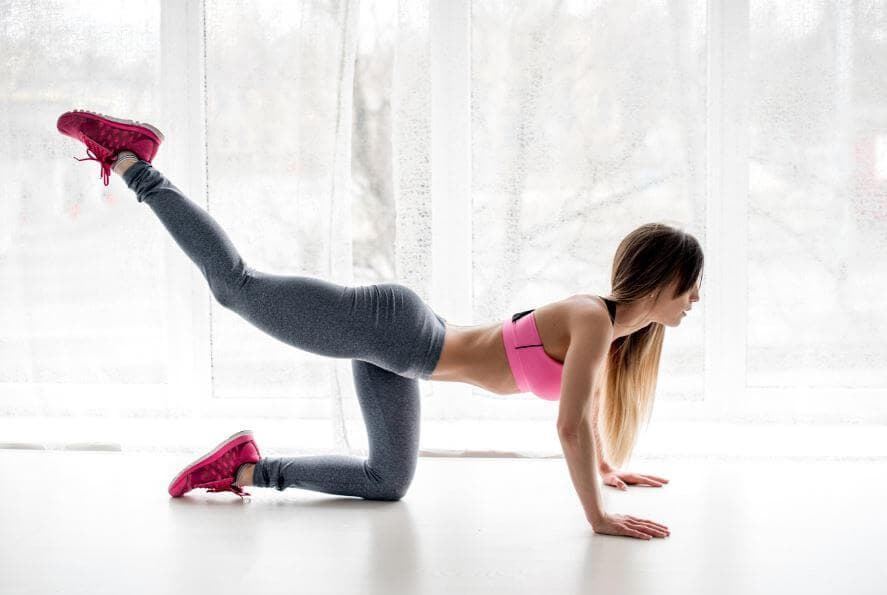
Source: https://mejorconsalud.as.com/5-ejercicios-aumentar-los-gluteos-manera-rapida/
In previous posts we have analyzed what are the keys to gaining muscle mass in general. Today, in the same way, we want to remember what the principles of hypertrophy are (7). Remember that to increase your glutes and hamstrings you must follow the training principles that are based on:
- A good protein intake throughout the day.
- Have a caloric surplus so that the muscle can grow.
- Perform workouts that involve mechanical tension, metabolic stress and muscle damage.
If your gluteal and hamstring training follows these principles you will increase your muscle mass in this area. And how can you tell if you’re training well? Remember that you can measure your performance with the Vitruve linear encoder. Quantify your sets and repetitions of deadlift, hip thrust or high deadlift and improve every day a little more. Next, we are going to offer you a series of exercises that we believe are very important to build strong glutes and hamstrings.
An example of a gluteal and hamstring workout
We must bear in mind that there are always some exercises better than others, or at least that they involve a greater contraction of the target muscle as well as being a little more fun. We are going to recommend 6 exercises that you can not fail in your gluteal and hamstring training routine: ́
Dead weight
The deadlift is one of the basic exercises for training the entire posterior area of the body. It focuses on the work of the hamstrings and buttocks, although the lower back area is also worked. You can work with dumbbell or Olympic bar. If you have just started in this exercise we also recommend the hexagonal bar that is less aggressive and helps improve the technique. It is an exercise with which you can lift great weights and that generates a lot of central fatigue. I would use it in the initial exercises of my routine.
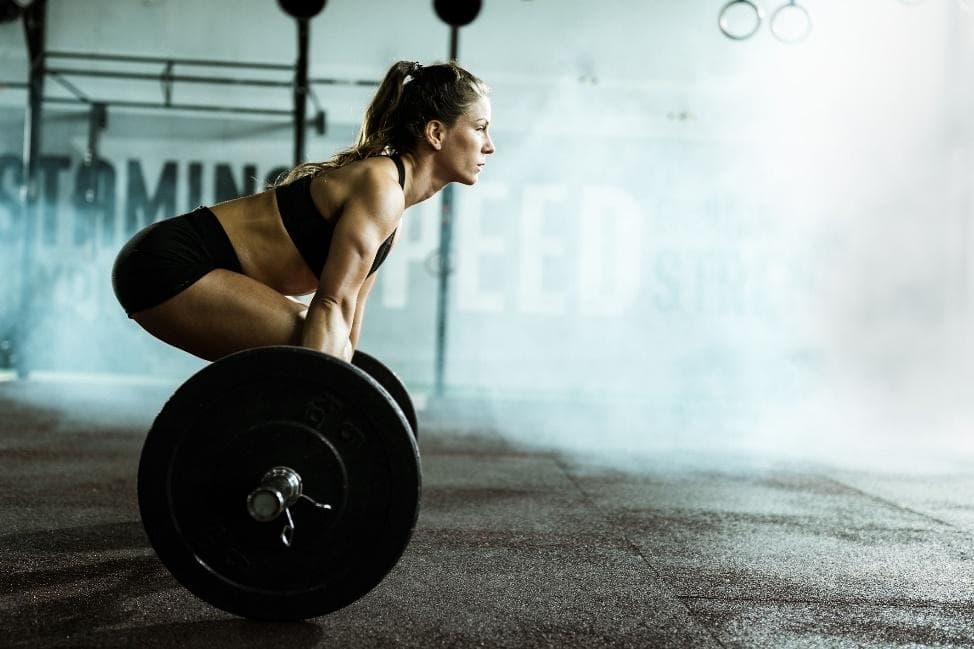
Source: https://mejorconsalud.as.com/5-ejercicios-aumentar-los-gluteos-manera-rapida/
Good morning
Within your gluteal and hamstring training you should have a variety of exercises for the same muscle region. In this case the good morning also focuses on the work of the entire posterior chain, although it places more emphasis on the lower back or lumbar region. It starts with very very low weights since it generates many demands on the lower back. With this exercise you will greatly improve the coordination between the muscle chains of the posterior region of the body.
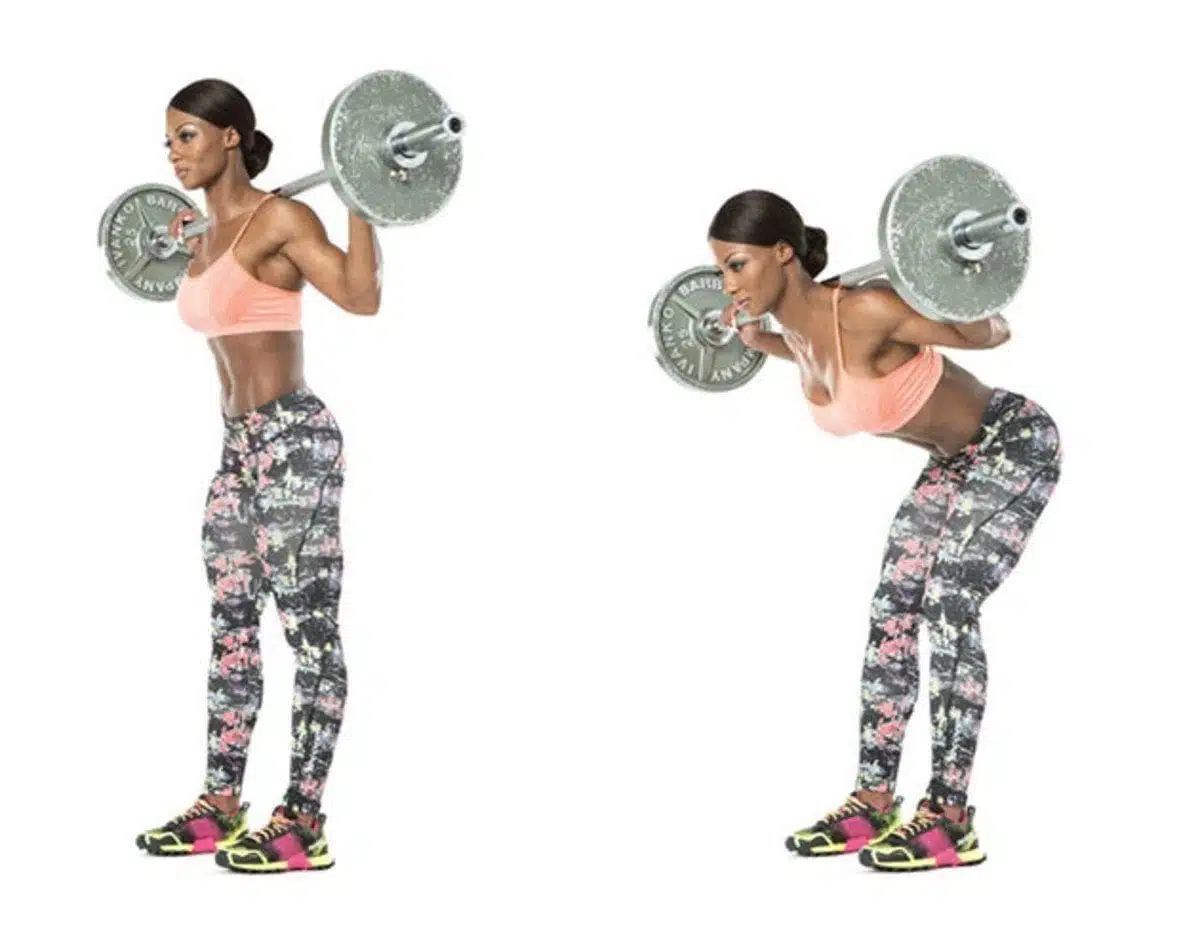
Source: https://tumejorfisico.com/ejercicios-de-piernas/buenos-dias/
Leg press
This exercise is more dominant knee extension. However, when we work the knee extension can be accompanied by a hip extension. When we make a leg press, depending on the placement of the body we can work the buttock very powerfully. It won’t be the first time I’ve left the press feeling my buttocks a lot. As we have said, you must work the whole leg as a whole and what better way to do it than by putting an exercise that allows the training of the whole leg at once. Of course, you can work with any squat you feel comfortable with (front squat, high bar squat, Smith machine squat, dumbbell squat, etc.)
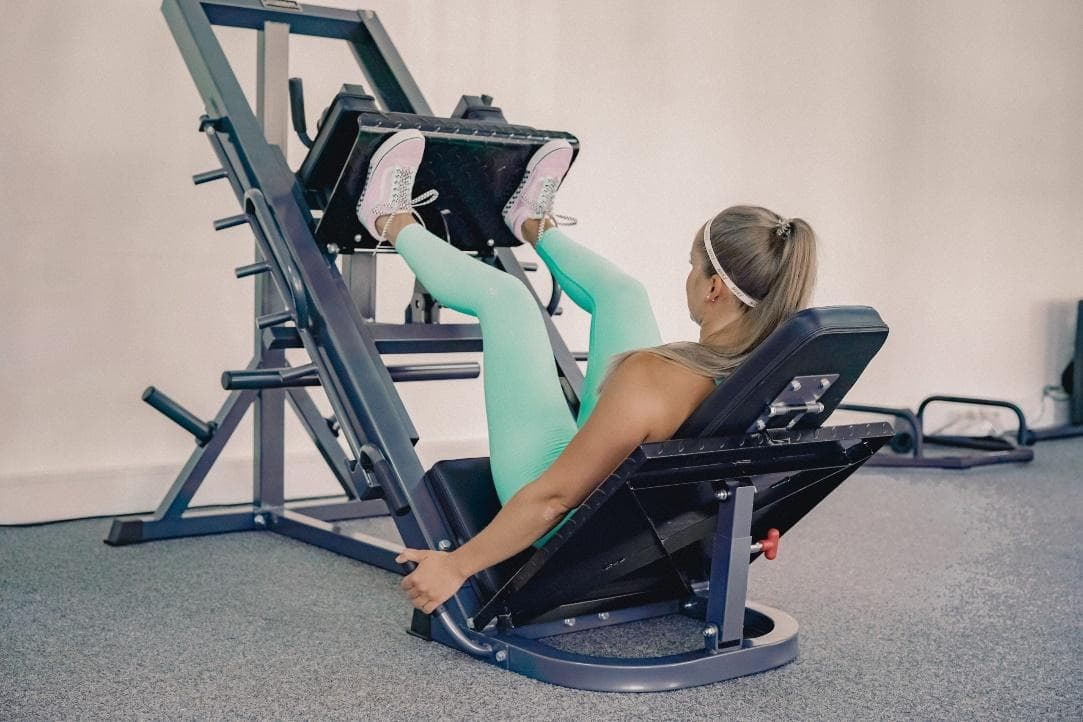
Source: https://www.titaniumstrength.es/blog/posicion-pies-leg-press/
Strides
Strides are that type of exercise in which you perfectly notice the part of the gluteus that you are working. Strides can be done in multiple ways, but I recommend starting by doing them with dumbbell and walking. There are static strides in which you return to the starting position, or dynamic strides in which you advance throughout the gym. For me, the last ones are the best. Start with light weights and go up little by little, remember that the first thing is to achieve a good technique and I am tired of seeing knees in the gyms that seem to be going to split. Align your ankle, knee and hip very well and if you still do not have it, perform more analytical exercises to gain strength in quadriceps, hamstring and glutes.
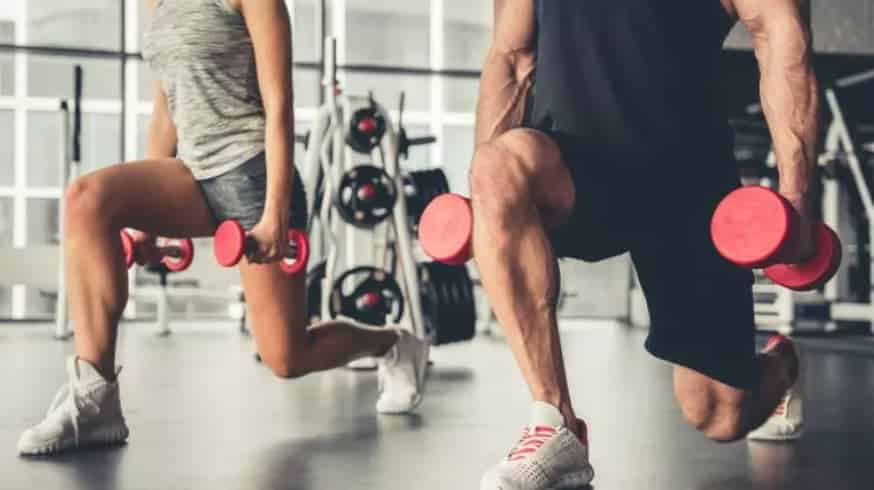
Source: https://lifestyle.fit/entrenamiento/fitness/beneficios-zancadas-con-mancuernas
Buttock kick
It won’t be the first time you’ve heard this exercise. It is very common to see it in gyms, almost always, practiced by women. However, it is a very good exercise to focus on the gluteus maximus. Its sensations are incredible and you will notice perfectly how your gluteus maximus works. It is another “must” in any training routine for glutes and hamstrings. You can start doing it with your own body weight and without the need for an external load, but I recommend that you grow little by little in intensity thanks to a low pulley.
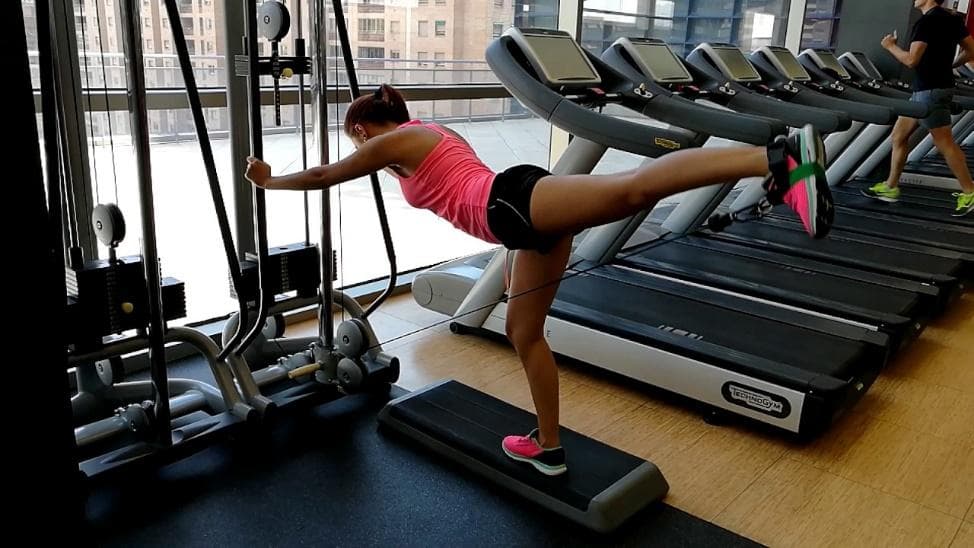
Source: https://www.youtube.com/watch?v=X1_IMdFk7CY
Hip-Thrust
Finally, one of the king exercises within gluteal and hamstring training is hip thrust. An exercise that focuses very well on the work of the gluteus and that allows very high workloads. Do not hesitate and get and work the hip-thrust right now! It is one of the best exercises without a doubt and that motivates a lot since it allows you to lift weights that you would never have imagined lifting.
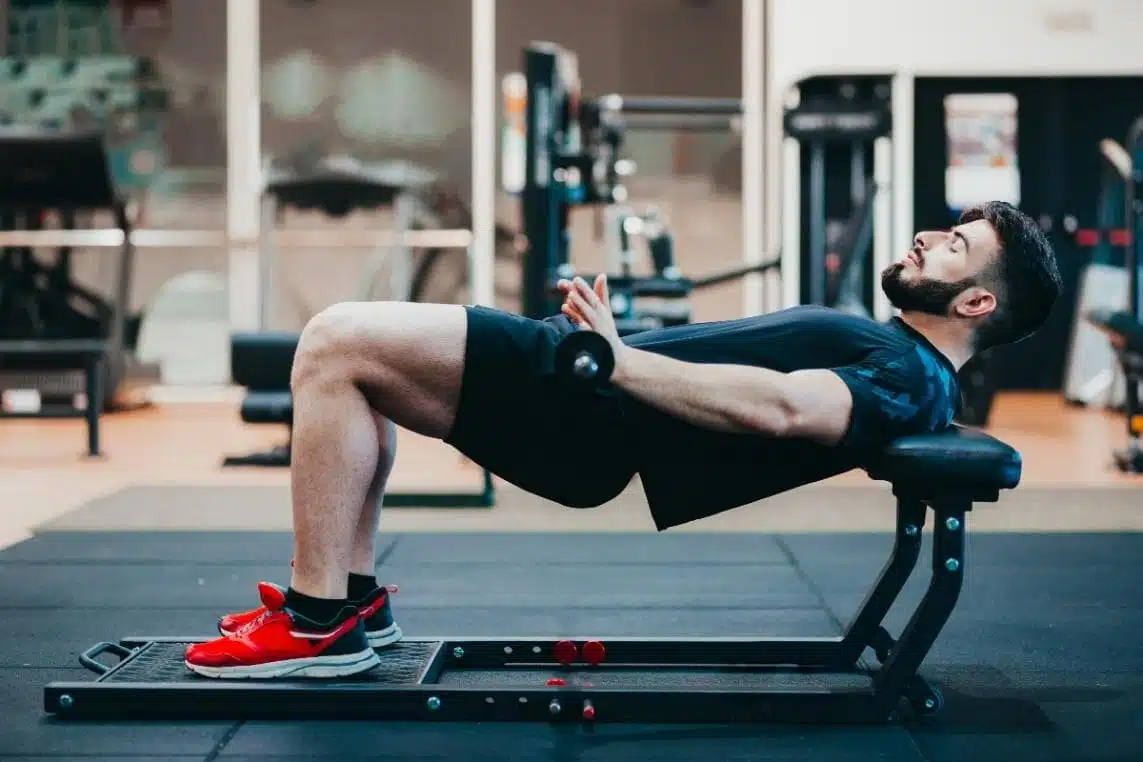
Source: https://www.manzanaroja.eu/hip-thrust-que-es-como-hacerlo-correctamente-y-el-reto-de-30-dias-para-conseguir-unos-gluteos-estupendos/
These are the 6 exercises that can best come to you to perform your gluteal and hamstring training. How you combine them will determine, on the one hand, the fatigue of your training, and on the other, what exercises you want to focus on the most. I would never leave some very demanding exercises such as the deadlift, the squat with bar or the hip thrust for the end. Remember also that you can play with different devices, for example, you can do squat in multipower machine, deadlift with dumbbell and hip thrust with sack.
Also remember that in order to improve you have to measure your training and the linear encoder of Vitruve allows it. We have seen in previous posts the functionality of the encoder to measure the deadlift, the squat and the hip thrust. Speed-based training helps you train better and your sessions follow a correct progression. In addition, with the Vitruve application you will have saved all your workouts and you will be able to see your progression. Do not hesitate to use it in your workouts!
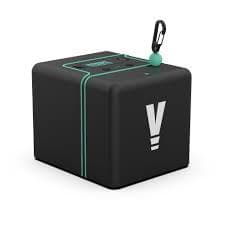
Source: https://shop.eu.vitruve.fit/products/vitruve-encoder?lang=es
Conclusion
Finally, we will emphasize again that to have strong glutes and hamstrings you must train near the failure and generating mechanical tension, metabolic stress and muscle damage. Only then can you increase the size of your buttocks and hamstrings. Performing thousands of repetitions of an exercise will produce a feeling of a lot of work, burning, but very uncontrolled. Establish a number of sets and repetitions per exercise, which can be between 15-20 weekly sets per muscle group and between 8-15 repetitions depending on the exercise. Quantify your improvements and rest enough to be able to do the next series as efficiently as possible. We recommend that you rest at least 1 minute or minute and a half at least.
Now you just have to get to work and get the most out of gluteal and hamstring training.
Unai Adrián Perez de Arrilucea Le Floc’h
References
1.Verpoorte A. Neanderthal energetics and spatial behaviour. Before Farming. 2006;3(2).
2.Antonio S, Wolfgang G, Robert H, Fullerton B, Carla S. The anatomical and functional relation between gluteus maximus and fascia lata. Journal of bodywork and movement therapies. 2013;17(4):512-7.
3.Flack NAMS, Nicholson HD, Woodley SJ. A review of the anatomy of the hip abductor muscles, gluteus medius, gluteus minimus, and tensor fascia lata. Clinical anatomy. 2012;25(6):697-708.
4.van der Made AD, Wieldraaijer T, Kerkhoffs G, Kleipool R, Engebretsen L, Van Dijk C, et al. The hamstring muscle complex. Knee Surgery, Sports Traumatology, Arthroscopy. 2015;23(7):2115-22.
5.Harper DJ, Carling C, Kiely J. High-intensity acceleration and deceleration demands in elite team sports competitive match play: a systematic review and meta-analysis of observational studies. Sports Medicine. 2019;49(12):1923-47.
6.Heiderscheit BC, Sherry MA, Silder A, Chumanov ES, Thelen DG. Hamstring strain injuries: recommendations for diagnosis, rehabilitation, and injury prevention. journal of orthopaedic & sports physical therapy. 2010;40(2):67-81.
7.Howe LP, Read P, Waldron M. Muscle hypertrophy: A narrative review on training principles for increasing muscle mass. Strength & Conditioning Journal. 2017;39(5):72-81.

